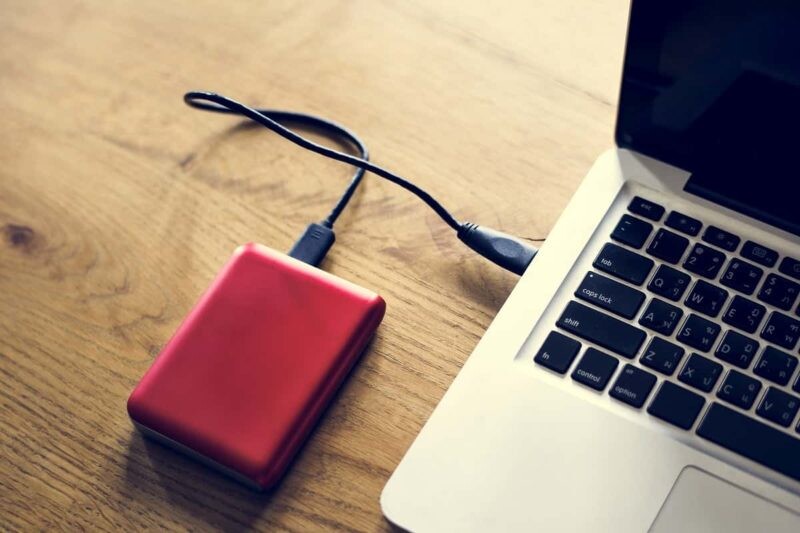how to remove hard drive from computer
Last Updated on November 10, 2021
There are plenty of reasons why you would want to destroy your hard drive. But for most folks, it's for data security. Our gadgets contain sensitive information like credit card details and home addresses. You wouldn't want these in the wrong hands.
If our information can now be easily taken online, what more in a physical format? Especially today, with up-to-date equipment and advanced AI programs, even a hard disk that's been reformatted can have its innermost secrets revealed.
So what do you do when you're upgrading your equipment and you need your files erased for good? Here are the best ways to destroy a hard drive for your peace of mind.
Why You Should Destroy a Hard Drive Properly

Before anything else, let's first talk about a couple of myths regarding destroying a hard drive.
Contrary to popular belief, simply getting your hard drive wet isn't going to render the files inside useless. It's not a toaster or fan. Data is stored on a platter like that in CDs, with blocks of 1s and 0s. If you want to make sure no one finds your secrets, there are two main ways to go about it – keep the platter from spinning OR make the data inside unreadable.
Depending on the kind of hard drive you have, this may take more (or less) time. For example: laptops typically have glass or ceramic platters. As these are pretty fragile to begin with, you can pretty much damage them if you're careless. On the other hand, desktops usually come with aluminum platters that are sturdier.
How To Destroy a Hard Drive: What Doesn't Work

Water Damage
As mentioned, just getting your hard drive wet won't do the job. That's because data is still on the platters. Unless that thing is allowed to dry out – leaving behind residue that's difficult to clean – experts will have no problem reading information on it.
If your computer is using solid-state drives (SSDs) and flash memory though, it's possible to damage them with water. But because these are expensive, most PCs nowadays still utilize a hard disk drive or HDD, which can make data retrieval for undamaged sections rather easy.
Magnets
Even if your magnets are powerful enough, it's still not a safe option for securely removing information from a hard drive. It might corrupt the data in it, but there's no guarantee, especially if the hard drive is protected by steel sheathing.
Smashing
Brute force works most of the time – but there's a tiny chance it might not. In the aftermath of the Sandy Hook Elementary School shooting in 2012 for instance, specialists worked to recover data from the smashed hard drive of Adam Lanza. Similar cases are not impossible, depending on the extent of damage dealt. However, it will be long and costly.
How To Destroy a Hard Drive: What Works

1. Data-Wiping Programs
Later versions of software, like Windows 10 and 8.1, will have their own update and recovery functions that will not only reset your PC but also erase data. But if you want complete assurance, you can turn to data-wiping programs.
Disk Wipe is FREE and easy to use. Just download the file from the website and run it, or make a bootable environment using a USB flash drive and run the program from there. When choosing the type of erasing pattern and number of passes, as a general rule, the more passes means a longer time for the wipe to finish. However, that will result in a better erasure, too.
Another good service is Parted Magic. While it will cost you $11, this program provides disk partitioning, disk cloning, as well as file recovery, along with drive wiping.
2. Brute Force
Want to release some pent up anger? Then destroying your hard drive using blunt force should come easy. Please note that there will be small flying debris and possibly scattered parts. Make sure to wear protective gear, like gloves and/or goggles to protect your person.
Make the damage massive. Aluminum platters in desktops for example, can have a giant scratch or crack, and experts can still read information on it. This is all thanks to modern forensic labs. In fact, some labs can recover your info without needing to spin the platters.
3. Drilling Holes
An effective method for rendering the platters unreadable is by drilling holes on them. You can achieve this with the traditional hammer and nail approach, or you can use a drill. Instead of drilling holes, another alternative is to disassemble the hard drive and grind and/or sand the surface of the platters. If you don't have a drill then this might be a fancy reason to get one.
4. Overwriting
Windows and Mac OS X software have overwrite utilities that can help you protect data. The downside is that, it could leave 'ghost' traces, which other programs or experts can still retrieve. Should your hard drive be included in litigation, overwritten files do not sit well with the jury, even if no one can read the files there anymore. That's because it just makes you look guilty – even if you're not.
5. Heat/Fire
Most people may advise you to burn or melt your hard drive. This can be challenging as their magnetic properties usually require super high heat. Not to mention the fumes that will come out will be toxic for your health. This method works – but is NOT recommended.
For this, you may opt for a blowtorch or regular bonfire. If you have a kiln, you can throw it there as most kilns produce about 1,500 °C (2,732 °F) of heat, enough to dissolve your sensitive information forever.
Some folks use microwaves, but that could be dangerous. Even if it's effective at melting the surface of the platter, it could take some time because in general, microwaves are just not that hot. Also, you could end up damaging your kitchen appliance instead of the hard drive.
6. Acid
The best method? Wipe the hard drive using a program AND then destroy it physically, preferably using acid to render any data unreadable. Do note that this may cause harmful fumes, so observe the right measures. Do this outdoors so there's proper ventilation, and wear protective clothing. Household chemicals like diluted hydrochloric or muriatic acid should do the trick nicely.
Next, recycle the old parts of your PC or laptop (or gift them, if there are usable components). Depending on where you live, you may or may not have the right facilities for disposing/recycling electronic waste, or e-waste. Do coordinate with authorities on further information so you dispose of your electronics responsibly.
Final Words
You can never be too safe when it comes to data protection and privacy. Whether you're getting rid of your electronics because you bought new stuff, or you're selling your old equipment, don't forget to wipe your data clean first.
For those who sent their PCs or laptops for repair, always ask the shop for your hard drive back. Even if you believe there's nothing on there that can be considered sensitive information, it's still yours. And who knows what people are up to these days?
You'll thank yourself that you took the time to protect your files.
how to remove hard drive from computer
Source: https://fancycrave.com/how-to-destroy-a-hard-drive/
Posted by: hendersonsomakingdon.blogspot.com

0 Response to "how to remove hard drive from computer"
Post a Comment